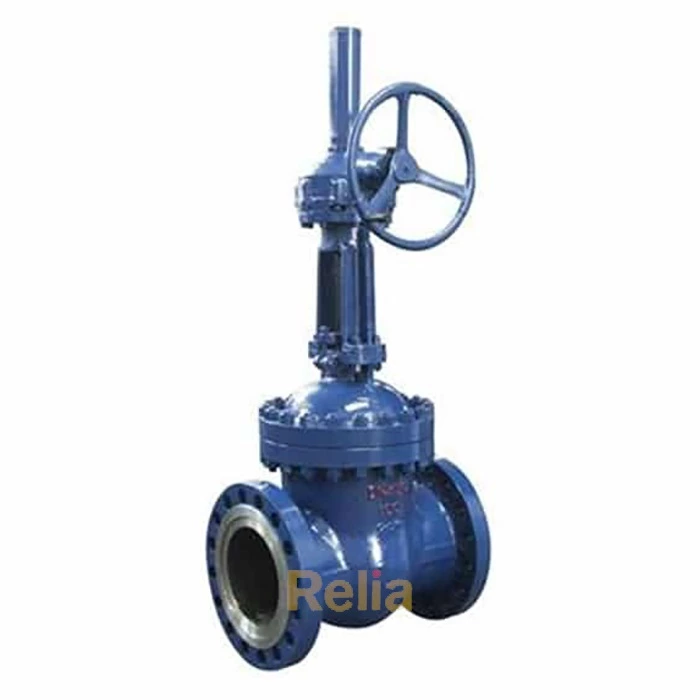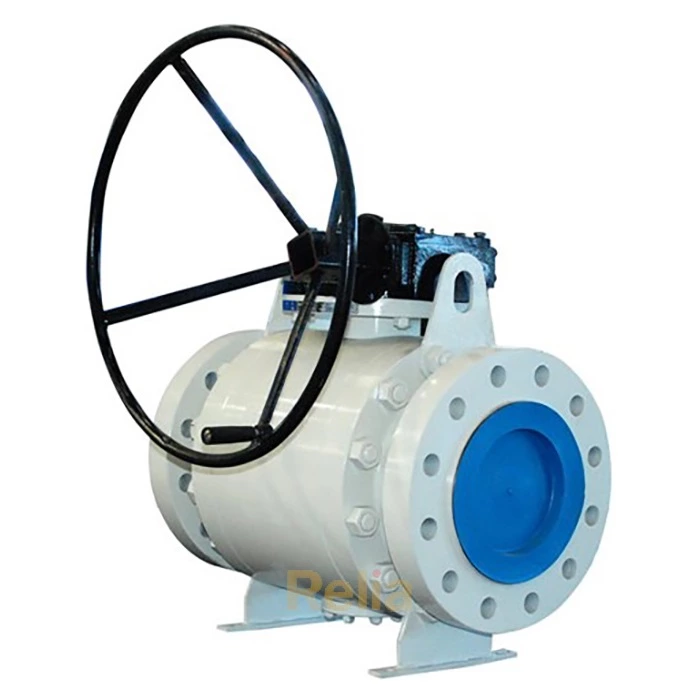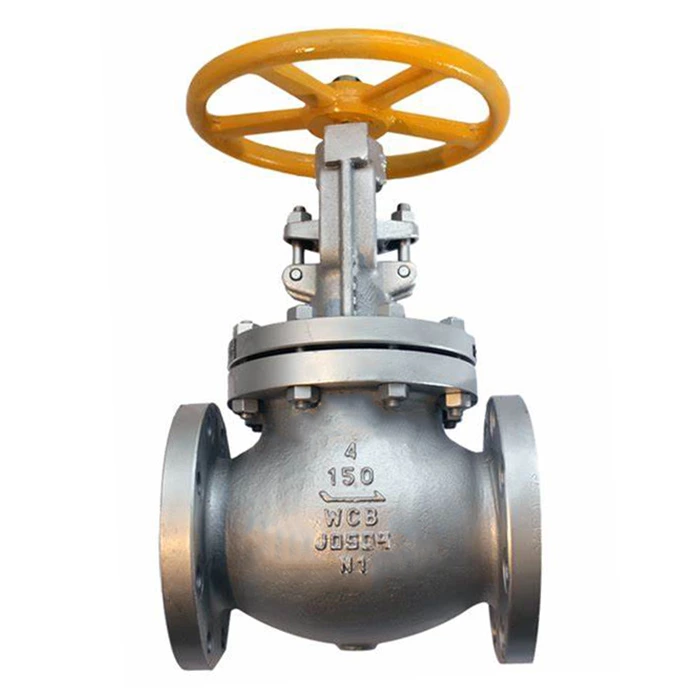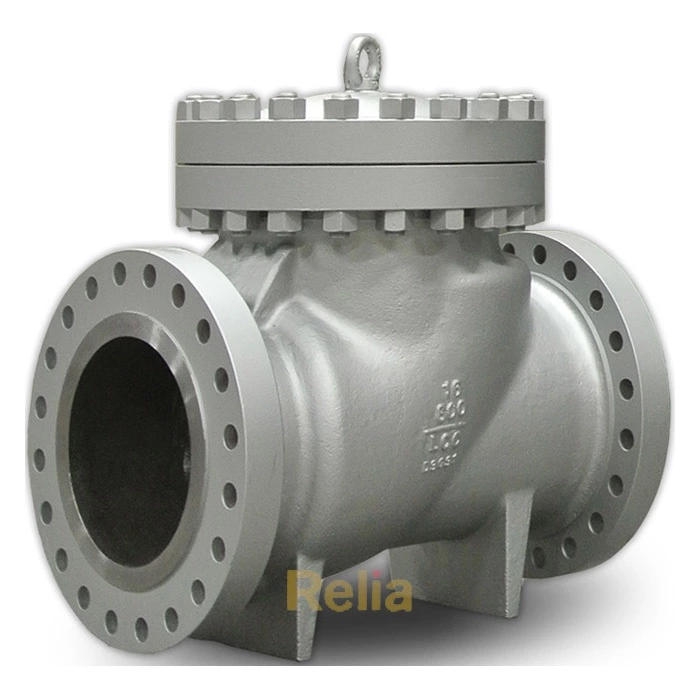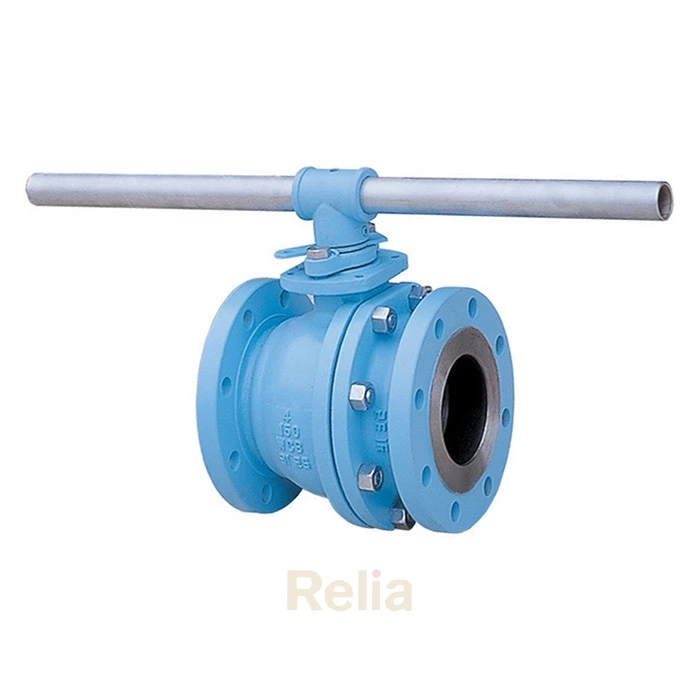Valve Types And Applications
Common valve types are ball valves, gate valves, globe valves, check valves, plug valves, and butterfly valves etc. They are different uses (on/off,control), different fluids (liquid, gas, etc; combustible, toxic, corrosive, etc), different pressure and temperature conditions.
BALL VALVES
Because of their excellent operating characteristics, ball valves are used for the broadest spectrum of isolation applications and are available in a wide range of sizes and materials. They are available in full flow and full through conduit.
Advantages: quick acting, straight through flow in either direction, low pressure drop, bubble tight shut off & operating torque, easily actuated.
Disadvantages: temperature limitations on seating material; long "relative" face-to-face dimension.
GATE VALVES
Commonly used in industrial piping for stop or isolating – to turn on and shut off the flow as opposed to regulating flow. Gate valves are named from the gate-like disc which operates at a right angle to the path of the flow. Gate valves are general-service valves that can be made in a broad spectrum of sizes using a variety of different materials.
Wedge Gate Valves
Wedge gate valves are metal-seated but are also available with a resilient seat insert if a drip-tight shut off is required. They can meet the demands of a wide range of pressure and temperature conditions and are available in full port.
Advantages: low pressure drop, straight through flow in either direction.
Disadvantages: slow acting, bulky, and leaky (more than 150NB).Do not partially open, as this will cause damage to the seat/disc.
Knife Gate Valves (50mm and larger):
Unlike traditional gate valves, they are able to throttle (at lower pressures) depending on line media and degree of opening. Metal-seated knife gate valves do not provide a leak-tight shut-off. Some knife gate valves have a resilient seat in order to ensure they close drip-tight. Available in v-port, o-port, and lined, they are ideally suited for the control of effluent, slurries, waste products, semi-solids, pulp, and bulk powders. Most knife gate valves are designed for a single flow direction.
Parallel Slide Gate Valves
Parallel Slide Gate Valves are popular in steam applications as the energised disc design handles thermal expansion without sticking like wedge gate valves. Another advantage is lower torque than wedge gate valves, especially in venturi (Ferranti) reduced bore confguration. Parallel slide valves consist of two parallel gates that are energized against the seat at all times by springs or a wedging spreader bar between the two gates. No mechanical stress is exerted between the discs, and the valve is not subjected to dangerous strains in opening and closing. This design of valve maintains fluid tightness without the aid of wedging action. These valves are used for saturated and super heated steam.
Pipeline Slab Gate Valves
The parallel solid slab and the expanding two-piece wedging slab are both available. Both styles protect the seat area from the flow in all operating positions. These valves have a full-through conduit connection with a hole in the slab. Slab style gate valves have seats that are spring-energised. The expanding slab features two opposed sliding v-shape segments that maintain pressure against the seats. These valves are for API6D pipeline applications but are also used for API6A wellhead valves. All these valves are made in metal-to-metal and soft-seat configurations.
GLOBE VALVES
Globe/Stop Valves:
For globe/stop valves, the flow path through globe valves follows a changing course, thereby causing increased resistance to flow and a considerable pressure drop. Because of the seating arrangements, globe valves are the most suitable for throttling flow. However, avoid extremely close throttling when the repeatable pressure drop exceeds 20%. Close throttling creates excess noise, vibration, and possible damage to valves and piping. Consult us for special service valve solutions. The valve is named after its globular body. Compared to gate valves, globe valves are designed to open and close more quickly. Their flow characteristics can be changed by re-confguring their discs.
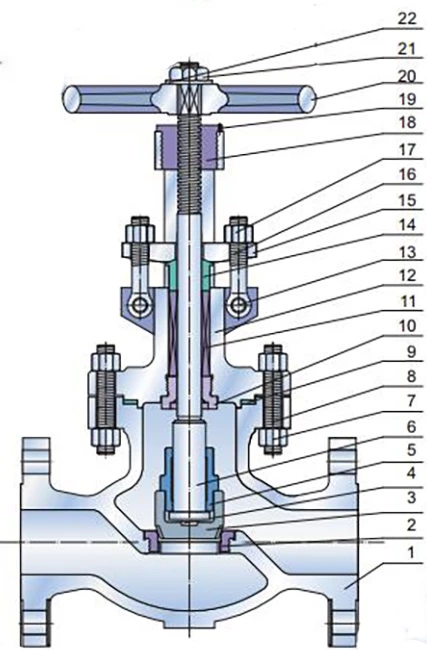
Flanged Globe Valves
Advantage: excellent for shutting off and regulating (drip tightness above 50NB).
Disadvantages: high pressure drop (head loss), unidirectional.
Stop Check Valves (SDNR):
Stop check valves are essentially the same as Globe valves, except there is no mechanical connection between the stem and the disc. They provide a combination stop valve and a piston check valve in one valve. However, they are not designed for throttling. They are used in steam boiler outlet piping when two or more boilers are connected to a common header. Valves must be installed with pressure under the disc, and when the stem is raised, only boiler pressure can raise the disc whenever boiler pressure exceeds header pressure. They prevent backflow from the header to the boiler.
CHECK VALVES
Check valves are also call non-return valves. The check valves prevent back-flow in the piping by constantly keeping fluid flowing in one direction. Check valves operate automatically. Some piston/disc check valves are spring loaded for fast operation (a minimum cracking pressure should be specified). Vertical downwards flow requires a spring loaded check valve.
Swing Check Valves
Swing checks and Wafer checks cease reverse flow with a flap that swings onto a seat. Use a swing check valve only for forward flow that is horizontal or vertical upward.
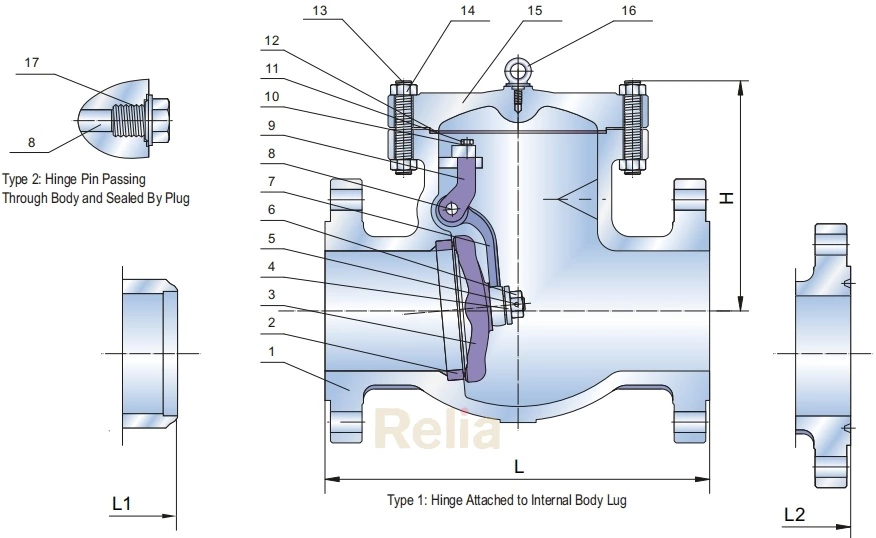
Swing Check Valve
Piston Check Valves
Piston & Spring Checks: cess reverse flow with a spring loaded plunger.
Ball Check Valves
Ball checks have a ball that slides into a hole as forward flow slows. Consider a ball check for semi-solids such as pulp or effluent.
Tilting Disc Check Valves
Tilting Disc Check Valves are similar to Swing Check Valves, but in most installations, slamming is minimised upon reversal of flow, so noise and vibration are reduced.
PLUG VALVES
Plug valves are valves with cylindrical or conically-tapered "plugs" which can be rotated inside the valve body to control flow through the valve. The plugs in plug valves have one or more hollow passageways going sideways through the plug, so that fluid can flow through the plug when the valve is open. Plug valves are simple and often economical.
BUTTERFLY VALVES
The butterfly valve derives its name from the wing-like action of the disc, which operates at right angles to the flow. Its main advantage is a seating surface, which is not critical. It is designed for flow isolation. The disc impinges against a resilient liner to provide bubble tightness with low operating torque. Compact and with a simple construction, butterfly valves facilitate easy pipe arrangement. Due to the disc, they have slightly reduced flow characteristics.
Advantages: fast acting, good regulating characteristics, compact and light weight, low pressure isolation.
Butterfly valves are simple, reliable, and range in size from 40mm to 1000mm and beyond. They can be controlled by a notched lever, a handwheel, or by a pneumatic or electric actuator. A shaft turns a disc 90º within a pipe. The disc angle within the pipe can provide a restriction varying from drip-tight through to almost full flow (except very small sizes).
Valve Characteristics
| Valve Types | Disc Actuation | Operation | Application | Temperature Range | Pressure Range | Face to Face Dimension | Weight |
| Gate Valve | Vertical | Handwheel, Gear, Motor | On-off | Wide | Wide | Long | Heavy |
| Globe Valve | Vertical | Handwheel, Gear, Motor | On-off | Wide | Wide | Longest | Heavy |
| Ball Valve | Vertical | Lever, Gear, Motor | On-off or Control | Narrow | Wide | Long | Heavy |
| Butterfly Valve | Vertical | Lever, Gear, Motor | On-off or Control | Narrow | Narrow | Short | Light |
